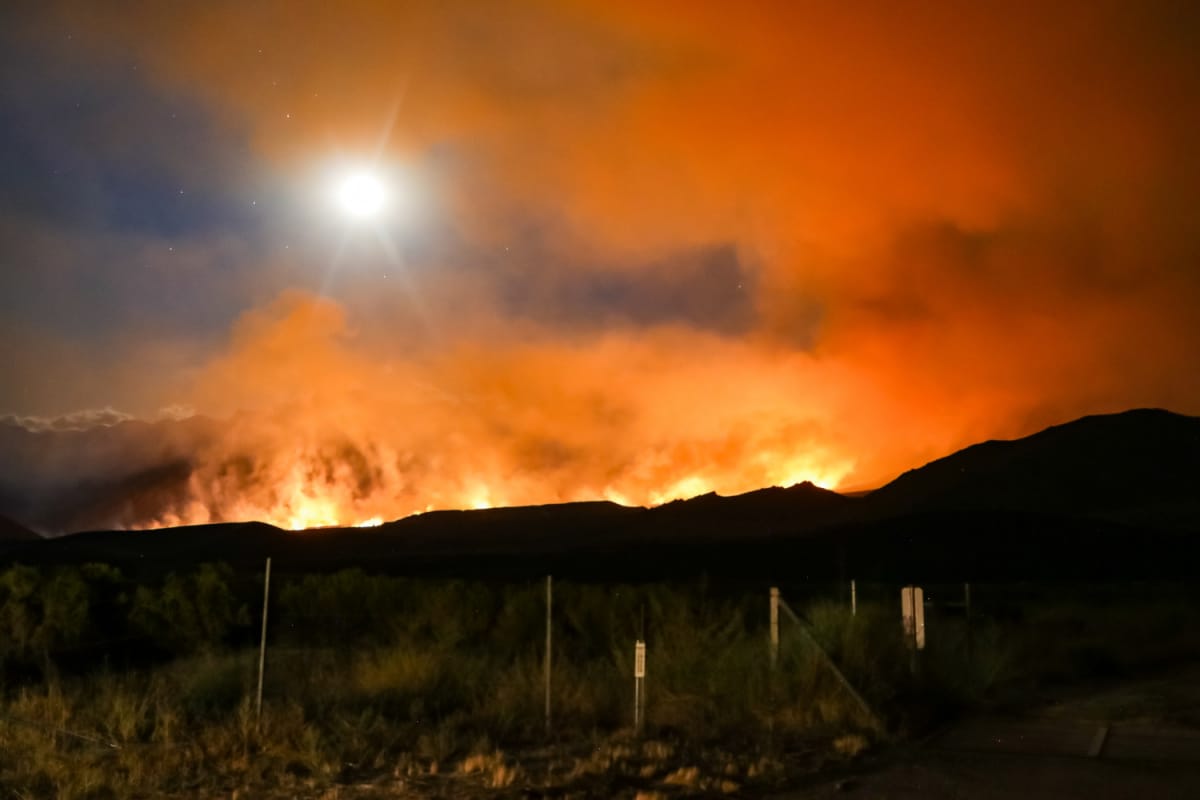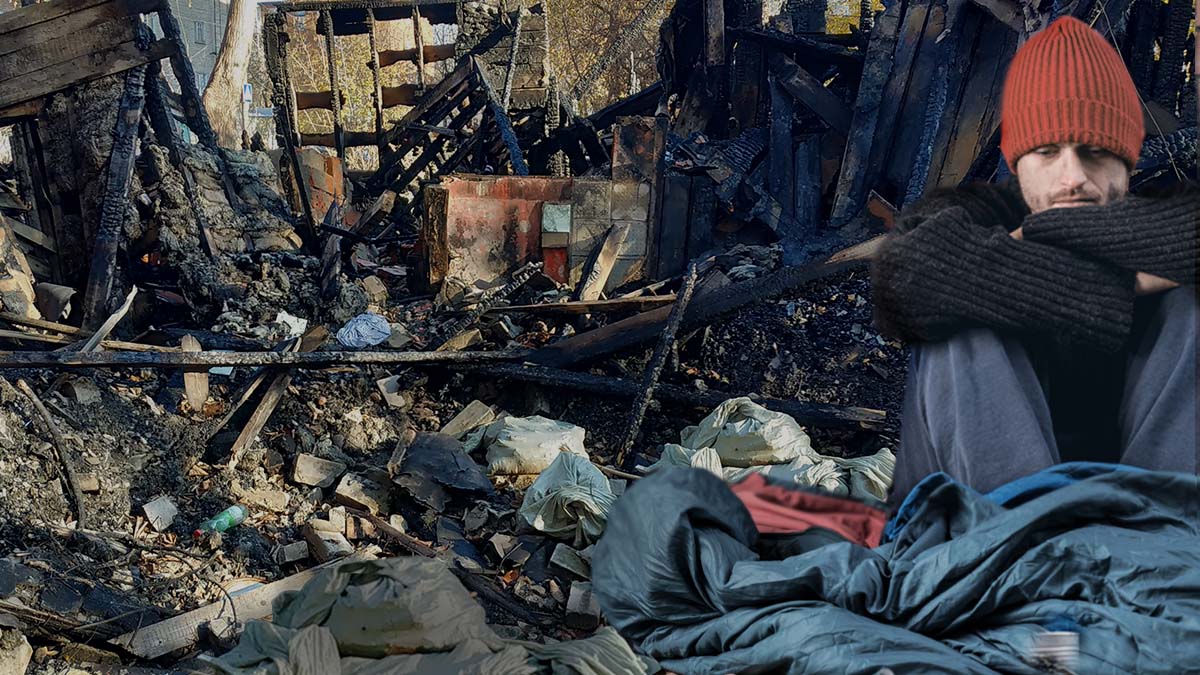
And the doctors fled: The second burning of Paradise, CA
Winds that once seemed romantic are now a source of annual fear.
The last time I saw him, in August 2020, he was on a friend’s porch, all bones. He peered out from behind the blond hair that hung down in strings, his thirty-something face looking much older, wrinkled and small. I could see from the video that he was barefoot with mud caked between his toes. He’d lost the special shoes that protected his soles from nerve pain due to poorly-controlled diabetes. My nurse, who sat beside him in blue scrubs, her hair in a ponytail messy from the heat, prompted him: “John—look here! The doctor is on the screen.”
He glanced at the iPad in her hand but quickly looked away, distracted by a sound in the distance, eyes darting around as though afraid to be caught.
“How are you feeling today, John?” I ventured, trying to bridge the digital gap that so often left me feeling helpless, unable to hunch closer to him or lightly place my hand on his knee.
I was John’s palliative care doctor, a medical specialty that works alongside patients’ regular doctors to focus on quality of life for those with serious illness. Our patients were usually diagnosed with diseases from which they would ultimately die, like heart failure, chronic lung disease, dementia, or metastatic cancer. We helped patients and families in the last several years of their life try to find comfort as their situation progressed.
But John was not dying of his illness—he was dying of neglect. And he didn’t have a primary doctor to manage what should have been treatable because of his mental health challenges. Because of his substance use. Because of the kind of insurance he had. All he had was us: a palliative care team largely operating remotely. He had been referred to us by his insurance company to try to keep him out of the hospital and to help him navigate his challenges. They didn’t know what else to do.
“I’m okay, I guess,” John said, answering my question unconvincingly as the bright sun illuminated his bony chest, poking through a thin shirt, and the vacancy in his eyes.
For John, and for so many others who had already lost so much, it was as though we brought thimbles of water to quench desiccated mouths.
A few months later, Butte County would pay for John to spend a couple of nights off the street in a hotel room. Our nurse couldn’t see him in person due to a surge in COVID-19, so we could only speak to him on the phone, which he often forgot to keep charged. That day in the hotel we had little time to talk before the line went silent.
I tried to imagine John’s hands clamped around a warm cup of coffee, a healthier stimulant than his usual, and his skeletal body modestly less sore after a night in a real bed. But his voice was thinner than usual, even his vocal cords seemed worn down. It was hard to connect without visuals to place him. He’d been back in the hospital. Not knowing when he would find food, worried his blood sugar would plummet, John had stopped taking his insulin. The police, or neighbors, called 911 and he was in and out of the hospital with diabetic ketoacidosis – an emergency in which blood sugars are so high they don’t even register, organs deteriorate and infections bloom.
Pulse racing, I got right to the crucial points I had skirted previously while building rapport with this patient, trying to bridge more than one kind of distance: “What do you want from your life, John? Is there something you can think of that might help you find some direction, some peace?”
“I just wish I could work,” he said in a whisper.
John had wanted to be a teacher at one point. That wish fell apart along with his mental health. He didn’t have the resolve, the support, to get through the schooling. He worked construction until his body came undone. Now John couldn’t get a job because of his frailty and some trouble with the law. So he wandered the asphalt roads that led to the river’s edge, looking for relief, and too often finding it in methamphetamine.
In early May 2021, John was found face down, unresponsive, at the encampment where he sometimes stayed with family, sleeping in a van or a homemade tent. I didn’t know when or why they all became homeless. It was hard enough to get John to talk about his health, let alone the rest of his life. We had offered John housing and drug rehabilitation programs, but he wouldn’t leave his parents, or he wasn’t ready to stop drugs, the only thing that helped him forget. John had been living on the seam between life and death, and now he was gone.
When we heard the news of John’s death, our palliative care team—a nurse, a chaplain, a social worker, and me—held each other virtually, electronic fingers interlaced. We had tried so damn hard to save him. We all felt helpless as we had so many times, watching the unnecessary mounting deaths of people in Butte County who were far too young. And while sometimes their deaths were due to coronavirus, just as often they seemed to be the consequence of living with too little for too long.
Another common denominator: they all tend to have Medi-Cal insurance.
Health care providers have negative feelings about both the reimbursement for, and the recipients of, this kind of insurance. One study referred to this group of patients as unappreciative, unaccountable, complex, noncompliant, exhausting and demanding. Even before a catastrophic fire decimated health care in the area, it took three, four, five attempts at different doctor’s offices before patients like John could find a physician willing to take on his care.
Growing up in Southern California in the 1970s and 80s, fires were an issue in the summer or the early fall, but they generally petered out before school began. With some well-known exceptions, they usually burned far from more populated areas. In fire season, the so-called Santa Ana or Diablo winds picked up and the hot air blew palm fronds onto our driveways and dispersed the smell of jasmine. As a child, these gusts transported me to exotic places. They almost felt romantic.
In the years since, the more affordable homes in California have been driven further outside of cities and closer to nature, with its beauty and its peril—and once-vibrant communities have faced terrible consequences.
On November 8th, 2018, the same gusty winds that had once entranced me brought down power lines near Camp Creek Road, a sliver of a path in a remote section of the Plumas National Forest in Northern California. The incident touched off the Camp Fire which was, at the time, the most destructive wildfire in the state’s history.
Within hours, the town of Paradise, California was consumed. The “Santa Ana season” of my youth now extends through Christmas. And as authors Alastair Gee and Dani Anguiano described so vividly in Fire in Paradise: An American Tragedy, the winds ”disperse wildfire embers as easily as a child flinging dandelion seeds into the breeze.” This is what happened in Paradise.
All it took was a spark on the wrong side of a river to ignite a disaster of historic proportions, erasing entire neighborhoods and their infrastructure. People died trying to escape, in a deadly traffic jam, or when they stayed behind, determined to survive or perish along with their pets and belongings. Almost everyone who made it out was left with nothing.
John lived just outside of Paradise, and his situation was not uncommon, both before and after the fire. “Among 240 patients served at a pop-up disaster clinic shortly after the fire,” said one account, “all identified as low income, 60% suffered chronic illness, 35% were diagnosed with a mental health condition, over 30% were uninsured and 40% noted that they were without regular medical care.”

But once everyone in Paradise lost everything, and the surrounding healthcare systems became flooded with a catastrophic barrage of unmet need, things only got worse for everyone in Butte County.
“People who had moved back after the fire…living in RVs on empty properties or in parking lots, and dealing with unclean air and contaminated water—had gone months with unmanged diseases or mental health issues, including post traumatic stress disorder, depression, and anxiety…And substance abuse is on the rise.”
In the long aftermath of the fire, the collapse of the safety net amounted to a second burning.
Adventist Health Feather River, the only hospital in the town of Paradise, was almost completely destroyed in the fire. Only a segment of the emergency department had survived the blaze. In 2019, a law passed allowing the ED to operate without an attached hospital. The plan was to transport critical patients to other cities — 13 to 45 miles away— for further care.
In the aftermath of the fire, the collapse of the safety net amounted to a second burning.
Every small medical clinic in town was also destroyed. And despite vigorous efforts to rebuild, and to utilize mobile clinics and telehealth, the physical and mental health of those in the Paradise area remain in dire straits to this day. Healthcare workers were among those who lost their lives and homes in the flames that day. Most who survived opted not to return.
John sometimes got himself to the hospital in his last year. He had ongoing pain from the nerve damage of diabetes and from the falls he sustained from unstable blood sugars. Once he even had a broken bone. But his history labeled him a “drug seeker,” so he was sent home without pain medications. He’d checked himself in looking for relief, and ended up with more despair. Each time we caught up after an ED visit, he reported the same thing: “They never do anything for me. They always just send me home. And they know I live on the streets. Nobody cares.”
A family friend of John’s remembered him as a sweet towheaded boy and young adult who did odd jobs for money. She didn’t know when he became so hollowed out and unreachable, or which of his adversities dug him into a well of hopelessness so deep it was hard to even find a way in to offer help.
For John, and for so many others who had already lost so much, it was as though we came bearing thimbles of water to quench desiccated mouths. It wasn’t just the poverty, the homelessness, the fire, the lack of access to quality healthcare, the mental illness, or the substance use disorder that impacted our patients. It was the pervasive sense of abandonment.
By the time we got there, it was too late to convince them anyone was on their side. No matter how hard we tried, we couldn’t get them to believe we would care if they just up and disappeared. And many of them did.
